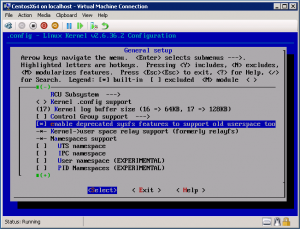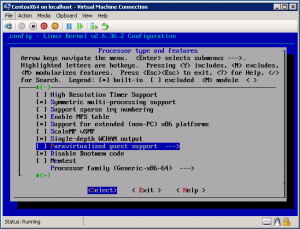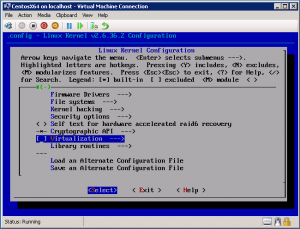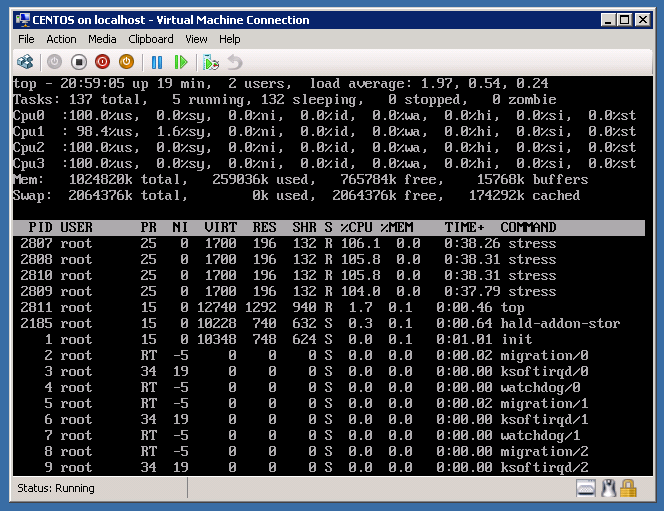
Categories

Sponsors


Archive
 Blogroll 
Badges


Community

|
Posted in Linux Server, Virtual Machine Manager | 1 Comment | 10,563 views | 10/01/2011 11:48
Actually you can use Centos with Hyper-V Linux Integration Components. But if you upgrade your kernel, you should re-apply LIC again. So you can try applying new kernel with pre-compiled Hyper-V drivers. But as you know, if you apply custom kernels on Centos, your Centos will be no longer supported. So apply this with your own risk.
In the menuconfig, you should be careful about 3 things. If not, your new kernel may give kernel panic. 1) First, always enable this feature to eliminate boot failures. General Setup -> Enable deprecated sysfs features to support old userspace too
2) Disable paravirtualized guest support to build rpm. Processor type and features -> Paravirtualized guest support
3) Disable Virtualization feature. Virtualization
Also you can append a version for Hyper-V. General setup -> Local Version – append to kernel release
You can exit from menuconfig by saving the config. After that do:
And append the following lines:
After the changes, you can go with making RPM:
You can find your RPMs in /usr/src/redhat directory.
Posted in Linux Server, Virtual Machine Manager, Windows Server | No Comment | 4,455 views | 12/05/2010 20:33
İşte uzun bir zamandır beklediğimiz sonuçlar gerçekleşmeye başladı. Artık Linux Integration Components v2.1 ile birlikte Hyper-V Centos 5.2 destekler durumda. Her ne kadar IC2 ile birlikte Centos desteklenmeye başlansa da başarılı sonuçlar elde edememiştik. Özellikle işlemci kullanımına yönelik bir gelişme söz konusu değildi. Fakat v2.1 ile birlikte Microsoft’tan Centos’a başarılı bir destek gelmiş durumda. Şuanki IC ile birlikte 4 CPU ve Shutdown desteğinin gelmesi önemli gelişmeler arasında. Aşağıda Centos’tan almış olduğum test sonuçlarını ve ekran görüntülerini paylaşıyorum. Test sonuçlarının ayrıntılı çıktısına aşağıdaki bağlantıdan erişebilirsiniz: Benchmark testleri için unixbench-5.1.2 kullandım. Ayrıca Cpu Stress için de aşağıdaki yazılımı kurdum. Cpu Stress’de 4 işlemcinin de kullanıldığını görmek çok güzel. Eskiden işlemciler arasında yük dağılımı düzgün yapılamıyordu. Fakat yeni IC ile birlikte bu problem de giderilmiş gibi görünüyor. Kişisel görüşüm, Hyper-V’nin Linux desteği konusunda çok yol aldığı. Fakat hala Linux üzerinde çalışan önemli bir projeniz olacaksa, vmware kullanmanızı tavsiye ediyorum. Hyper-V IC v2.1, henüz çok yeni çıkmış ve hala Beta olan bir IC. Ciddi projeler için henüz kullanılmaması gerektiğini düşünüyorum. Yalnız Microsoft’tan destek gelmeye devam ederse, Linux için daha iyi IC’ler çıkabilir ve biz de artık Hyper-V içersinde Linux kullanmaya başlayabiliriz. |














